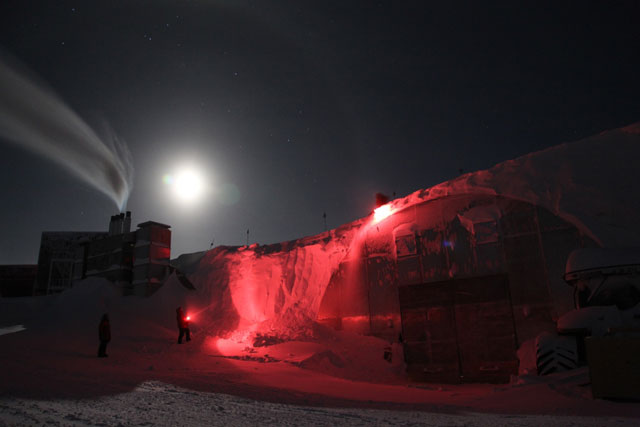
Supermoon Lights Up South Pole in Photo

Soon after the 24-hour darkness of Antarctic winter descended on the United States' Amundsen-Scott Station at the South Pole, the crew of scientists and staff overwintering there got a much-welcomed dose of very bright moonlight.
In early May, a gleaming supermoon appeared — this full moon coincides with the moon's perigee, or closest monthly pass of the Earth.
Thanks to that quirk of timing, a supermoon appears larger and brighter than a typical full moon, and crews at the South Pole station took full advantage of the extra light, completing as much outside maintenance as possible.
"After weeks of walking and working in the dark, or perhaps guided by the faint red light of a headlamp, we could all of a sudden see what we were doing and where we were going," wrote South Pole correspondent Sven Lidstrom in the Antarctic Sun, a publication of the National Science Foundation.
In Antarctica, the sun sets for the austral winter sometime in April, and doesn't reappear until sometime in August, plunging the continent into utter darkness.
And although the newly built Amundsen Scott Station, a gleaming, elevated building opened fully in 2008, offers far more comforts than earlier South Pole stations, no human construction can fully make up for the unending night of the frigid winter months.
Crews at Australia's Davis Station, the southernmost of that nation's Antarctic research stations, also noted the arrival of the supermoon, and said the extra light made it easier to move about the compound.
Sign up for the Live Science daily newsletter now
Get the world’s most fascinating discoveries delivered straight to your inbox.
"It is amazing how small things like actually seeing what you are doing can make your day," Lidstrom wrote.
Follow OurAmazingPlanet for the latest in Earth science and exploration news on Twitter @OAPlanet. We're also on Facebook & Google+.










